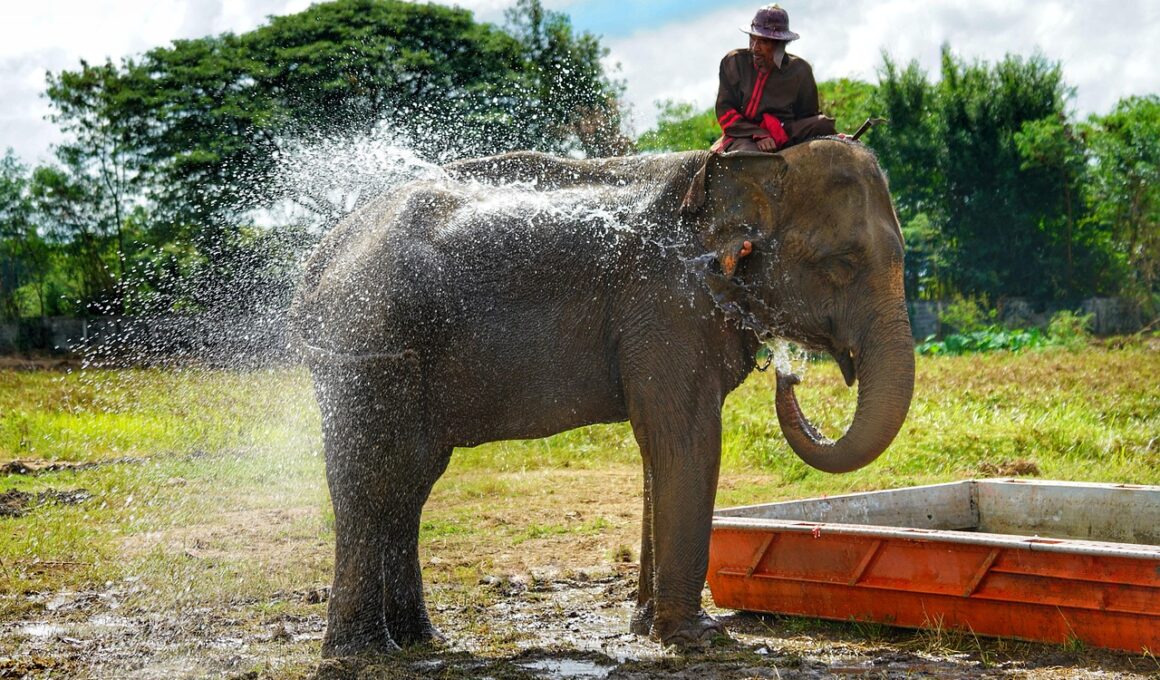Cooling Down After High-Intensity Training in Youth Athletes
Cooling down is an essential part of a young athlete’s training routine, especially after high-intensity workouts. This process helps the body transition from an intense physical state to a resting state. Primarily, it reduces heart rate and aids in the recovery of muscles. Engaging in cool-down exercises can significantly help prevent injuries. For youth athletes, the importance of a proper cool-down can enhance their overall training experience, providing both physiological and psychological benefits. During this phase, gentle stretching and low-intensity aerobic exercises keep the blood circulating, which promotes recovery. Furthermore, it improves flexibility and reduces muscle soreness. Athletes must understand that cool-down sessions are as vital as the actual workouts. Parents and coaches should educate them on this critical post-training routine, emphasizing its long-term advantages. Some benefits include enhanced performance, better recovery rates, and an increased range of motion. Thus, integrating cooling-down techniques into training routines should be a non-negotiable aspect for youth athletes.
Various cool-down techniques exist that youth athletes can incorporate after their training sessions. These techniques may include light jogging, walking, and static stretching. A light jog or walk for about 5-10 minutes allows the heart rate to gradually decrease, aiding the body in adapting. Following this, static stretching for major muscle groups is beneficial, as it lengthens the muscles and prevents stiffness. Practicing breathing exercises is another effective method to promote relaxation during the cool-down phase. Additionally, athletes can use foam rollers to facilitate muscle recovery, which helps alleviate tightness and soreness. This is particularly important for youth athletes who often engage in high-impact activities. Another crucial aspect is hydration; athletes need to replenish fluids lost during training. Encourage them to drink water or electrolyte-replenishing beverages. Parents and coaches can further support youth athletes by providing an environment that fosters these cool-down practices. Overall, being consistent with cool-down routines can cultivate a healthy athletic mindset while contributing to better long-term performance and well-being.
Benefits of Effective Cool-Down Techniques
The benefits of effective cooling down are far-reaching for youth athletes. First, it aids in reducing muscle soreness and stiffness post-training. By implementing cool-down methods, athletes can minimize lactic acid buildup in their muscles. Such lessening of soreness enables them to perform efficiently during subsequent training sessions. Furthermore, proper recovery after intense workouts boosts overall athletic performance. Enhanced performance is typically observed as a result of reduced fatigue and improved muscle function. Youth athletes also find that they experience better concentration and mental clarity while competing or training. Cool-down routines can shape a lasting habit that contributes to an athlete’s understanding of self-care. This awareness can prove beneficial as they transition into adulthood. Coaches can enhance a youth athlete’s experience by incorporating valuable feedback during these sessions, ensuring that they learn the nuances surrounding self-care practices. In conclusion, teaching cool-down techniques provides athletes with tools to maintain a healthy athletic lifestyle. Establishing these habits early on reduces the risk of future injuries and enhances their joy of participating in sports.
Parents play a crucial role in promoting the importance of cooling down after training sessions within youth athletes. Encouraging children to participate in a structured cool-down routine fosters a sense of responsibility towards their health and performance. Setting a strong example by practicing cool-down techniques themselves can greatly influence young athletes. Parents are also instrumental in creating a supportive environment that prioritizes not just winning, but overall well-being. They should actively engage in discussions about the significance of cool-down practices, highlighting their long-term physical and mental benefits. Engaging in conversations around experiences of soreness and fatigue can help children internalize these techniques. Additionally, they can offer rewards or incentives for consistency in cooling down after each training session. Regularly attending practices or games allows them to witness the application of these lessons firsthand. By being involved and informed, parents can instill positive habits that resonate well into adulthood, promoting healthier lifestyles for athletes. Overall, creating a culture that values recovery and self-care in training routines sets the foundation for resilience and long-term athletic success.
Incorporating Cool-Down Techniques into Training
Incorporating cool-down techniques into training sessions requires a structured approach. Coaches should develop a clear plan outlining the designated cool-down period after intense workouts. Assigning specific activities to this time will ensure that all athletes understand its importance. For example, following a practice or game, a coach can supervise a gentle jog combined with stretching activities. This structured approach helps athletes establish a routine, making cool-downs more effective. Furthermore, taking the time to explain the rationale behind each activity enhances understanding and encourages adherence. Coaches can also promote teamwork during cool-down sessions, reinforcing camaraderie among athletes while they decompress. Mixing up the cool-down techniques can keep the routine engaging, preventing monotony from setting in. Introducing fun elements like light games or relays during cooldown can create a pleasurable experience. Involving older athletes as mentors to younger teammates can fortify the importance of cool-down practices. Lastly, evaluating and reassessing these routines regularly ensures they remain relevant and effective in meeting the athletes’ needs over time. Thus, this thoughtful integration encourages better practices for youth athletes.
A key aspect to note is the difference between young athletes and adults regarding recovery practices. Youth athletes are still in their developmental phases, meaning their bodies respond differently to exertion and recovery. As their bodies are still growing, optimal recovery practices should be tailored accordingly. For instance, young athletes may take longer to recover between training sessions than adults. Coaches must be patient, understanding the unique needs of youth during this time. Furthermore, individual variations in recovery should be taken seriously; what works for one athlete may not suit another. Thus, coaches should prioritize personalized guidelines that account for age and maturity levels. Moreover, developing individualized cooling down plans can keep athletes engaged and motivated. Parents must be aware that recovery can vary based on other factors such as nutrition and overall health, influencing how effectively athletes recover. Promoting an environment that encourages communication about individual recovery needs is essential for youth growth. Ultimately, this individualized approach to cool-down techniques paves the way for a healthier understanding of self-care for the young athletes.
Conclusion: Prioritizing Cool-Down Techniques
In conclusion, prioritizing cool-down techniques in the training of youth athletes is critical for enhancing their overall performance and well-being. These techniques play a vital role in aiding muscle recovery, reducing soreness, and keeping injury risks at bay. Through structured cool-down practices, athletes cultivate a strong habit of self-care while developing mental resilience. Parents and coaches significantly influence the mindset around the importance of these recoveries, creating an encouraging atmosphere for young athletes. By embedding cool-down routines into training sessions, youth athletes can achieve improved flexibility and better athletic performance over time. Furthermore, engaging properly with cool-down sessions can positively shape their long-term approach towards overall health and fitness. Adopting a philosophy that embraces rest and recovery demonstrates its importance in youth sports. It teaches athletes that high performance can only be sustained with an appreciation for recovery. In this fast-paced world of youth athletics, making cool-down practices a priority fortifies their journey as both athletes and individuals. Lastly, fostering a positive association with recovery enhances their passion for sports while ensuring they cultivate lifelong healthy habits.
Promoting an effective cool-down routine ensures that youth athletes can maximize their performance on the field. By instilling these practices from an early age, they will understand the importance of recovery, rest, and self-care. Healthier habits formed during formative years can last a lifetime, ultimately creating well-rounded athletes who value both competition and personal well-being. In this way, youth sports promote not just physical strength but mental clarity and resilience. As athletes grow, they will encounter various challenges, including fatigue and competition pressure. Those who learn the proper techniques for cooling down will be far better equipped to manage these dynamics successfully. Coaches and parents should therefore work collaboratively to encourage these necessary practices. Strengthened through supportive environments, youth athletes can gain a deeper insight into balancing rigorous training with essential recovery. They also learn to appreciate their physical limits while pushing themselves for excellence. As they embrace their unique journeys in athletics, fostering a culture of recovery and self-care is vital. Initiating these valuable habits prepares them for future endeavors in their sports careers and promotes lifelong fitness habits.


